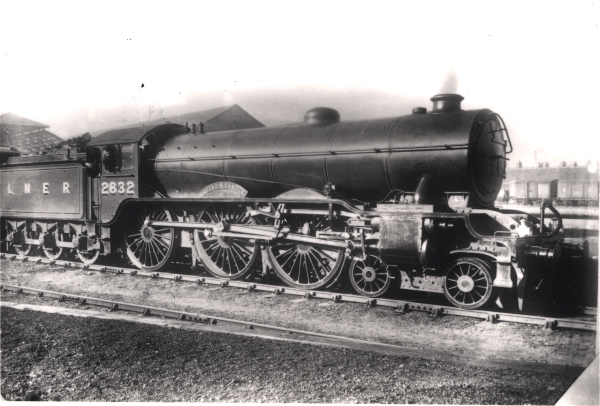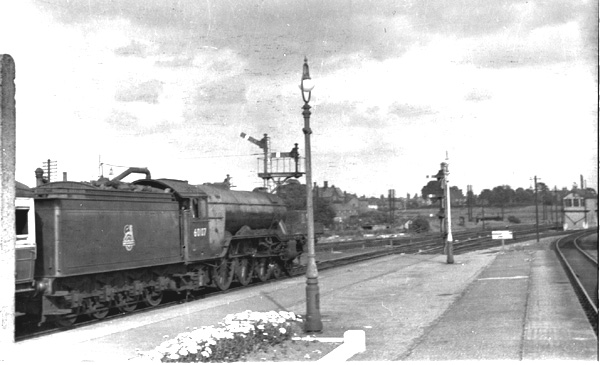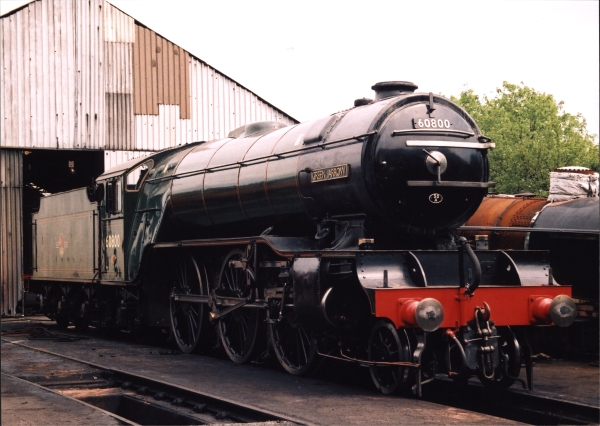In 1923, the Great Central Railway became part of the London & North Eastern Railway, and with the change of ownership came a change of Chief Engineer. John Robinson was offered the position with the LNER, but declined and the post went the the former Great Northern Railway CME - Nigel Gresley. An early Gresley design for the LNER was the B17 class, 4-6-0's which had found use in East Anglia. Most of the class were named after stately homes, this one being BELVOIR CASTLE, and after trials on the London Extension, a further batch was built to work the line. The new locomotives were named after football teams and earned the nickname 'Footballers'.
4-6-0 locomotive BELVOIR CASTLE at Belgrave Road Station See Details
Gresley's most well known design is undoubtedly the A3 class 4-6-2 Pacifics, made famous by the association with FLYING SCOTSMAN. In later LNER days, several of the class were displaced from top link duties by the streamlined A4 class, and were allocated to sheds on the old Great Central system. This member of the class, No. 60107, ROYAL LANCER, was one of several based at Leicester Central shed - another being No. 60103 - FLYING SCOTSMAN. Here, ROYAL LANCER runs through Aylesbury on 2nd July, 1955 with a Marylebone bound train.
Ex-LNER A3 class 4-6-2, No. 60107 - ROYAL LANCER at Aylesbury. See Details
Nigel Gresley's mixed traffic development of the A3 was the V2 class 2-6-2's. Locomotives of this type were regular performers on the London Extension during the 1940's and 1950's and were a great favourite amongst the locomotive crews. They were powerful and reliable machines, and their 6' 2' driving wheels allowed for very fast starts, which were preferred on the Great Central. The locomotive seen here is the National Railway Museum's flagship locomotive - pioneer V2, No. 60800 GREEN ARROW - stands outside Loughborough shed in the summer of 2002. Whilst never a London Extension engine, this is the only member of the class in preservation.
Ex-LNER V2 class locomotive, GREEN ARROW, on shed at Loughborough. See Details










